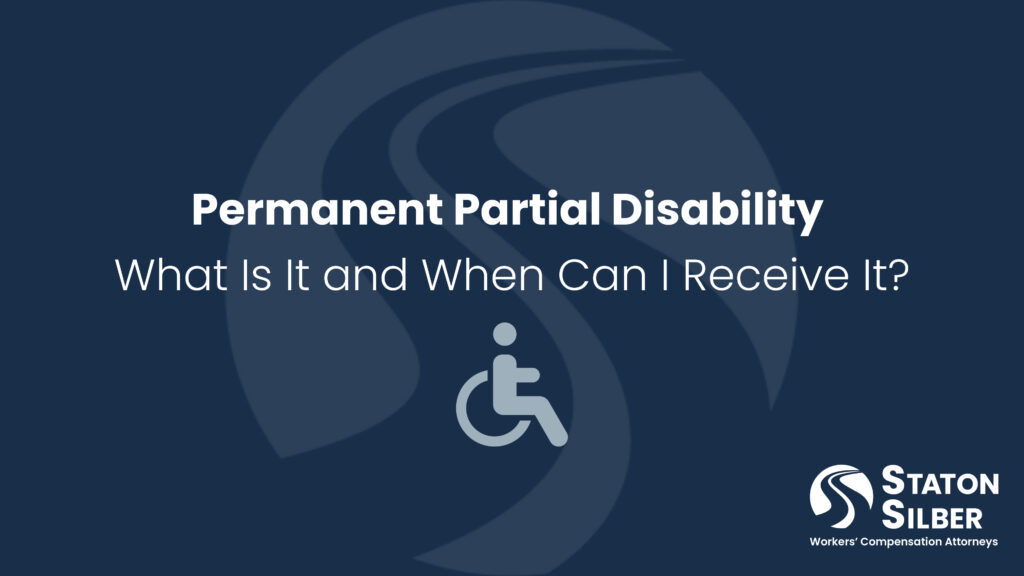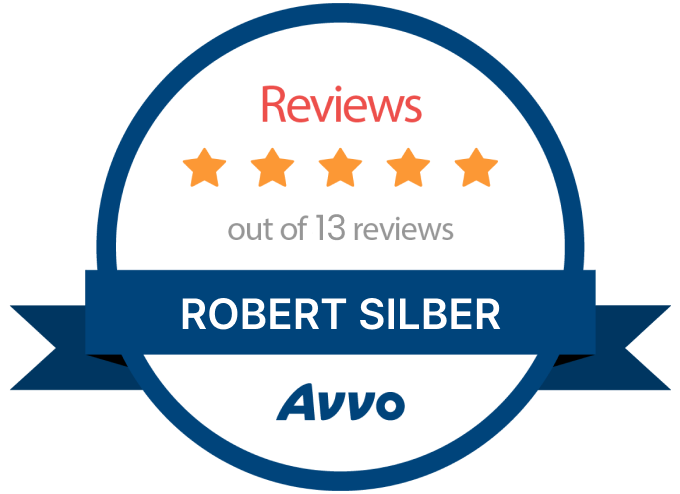What is Permanent Partial Disability?
Permanent partial disability (PPD) is a monetary benefit sometimes considered the settlement of a workers’ compensation claim. There are other ways a claim may “settle” with a sum of money, but the receipt of a PPD award is the most common.
Once an industrial injury or occupational disease has reached maximum medical improvement – which occurs when it is unlikely further treatment will lead to permanent improvement of the industrial injury or occupational disease – and the injured worker is working or has been found employable, a qualified medical professional must determine whether the injured worker has suffered “permanent impairment” due to the industrial injury or occupational disease. A permanent impairment rating must be supported by objective medical findings establishing loss of physical or mental functions.
An injured worker should receive PPD for which medical conditions?
An industrial injury or occupational disease often causes more than one medical condition or diagnosis. For instance, a knee injury involving a torn meniscus can sometimes permanently aggravate underlying osteoarthritis, resulting in greater loss of physical function than the repaired meniscus tear. Or the injured knee may cause an altered gait that leads to low back pain or problems with the opposite knee or leg. Or a worker may file a claim for a simple low back strain from a lifting incident at work but later discover they suffered a herniated disc requiring surgery. If surgery is only marginally successful, the injured worker might develop chronic pain leading to depression, anxiety, or other mental condition.
Each medical condition – physical as well as mental – should receive an impairment rating to ensure the injured worker is appropriately compensated for all permanent consequences of the industrial injury or occupational disease.
When is PPD awarded?
The Department of Labor and Industries or a self-insured employer will pay PPD only when
- the industrial injury or occupational disease has reached maximum medical improvement;
- the injured worker is working or been found employable in the same employment pattern as before the injury or disease;
- the injured worker has received an impairment rating for all conditions caused and/or permanently aggravated by the industrial injury or occupational disease; and
- the claim is otherwise ready to close and a closing order is issued.
The Department of Labor and Industries will issue the PPD payment along with the order that closes the injured worker’s claim. A self-insured employer must pay the PPD award once the Department of Labor and Industries issues the closing order indicating the amount of the PPD award.
The law, RCW 51.32.080(6), permits the Department of Labor and Industries and self-insured employers to pay PPD awards in monthly installments rather than a single lump sum. However, once the closing order becomes final (after 60 days from the date the order is received), the injured worker can apply for a lump sum payment, although the decision whether to grant the request is in the sole discretion of the Department of Labor and Industries.
Who can rate impairment for PPD?
Only licensed physicians can rate impairment, WAC 296-20-2010, and only “department-approved” chiropractors are authorized to perform a rating examination. If your attending physician is a chiropractor, you should talk to him or her about whether L&I has approved him or her to rate impairment and, if not, ask your chiropractor for a referral to a physician willing to rate impairment.
Ideally, an injured worker’s attending physician, who is the most familiar with the worker’s medical condition and can best assess whether permanent damage has resulted from the industrial injury or occupational disease, will agree to perform a permanent impairment rating examination. However, many physicians are reluctant to rate impairment owing to strict L&I guidelines to which physicians must adhere.
The Department of Labor and Industries and self-insured employers commonly arrange independent medical examinations (IMEs) by doctors they choose to rate permanent impairment. Needless to say, these types of rating exams are notoriously biased and frequently result in low-to-no permanent impairment opinions. It is critical to obtain a fair medical opinion from your own doctor or, if your doctor declines to rate impairment, from a doctor your attending physician recommends. The higher the impairment rating, the greater the monetary amount of PPD.
If the Department of Labor and Industries or a self-insured employer obtains an IME that rates you with low-to-no permanent impairment, it is equally critical to obtain a copy of the IME report and provide it to your attending physician (AP) for review and comment. If the AP disagrees with the rating, he or she should provide their own opinion of impairment; or, if the AP refuses to rate, he or she should be asked for a referral for another medical opinion about impairment.
Do not leave the rating of permanent impairment up to an IME. Rarely will an IME result in a fair or reasonable impairment rating opinion. We strongly recommend contacting an attorney if you receive a notice from L&I or a self-insured employer of an IME to discuss your options and how to move forward in the best interest of your claim in order to maximize your PPD recovery.
How is the amount of PPD calculated?
There are two distinct types of disabilities for purposes of PPD: specified and unspecified. Specified disabilities are listed in RCW 51.32.080(1)(a) and relate to physical amputation or loss of function of upper extremities, such as shoulders, elbows, arms, wrists, or hands, or lower extremities such as hips, knees, legs, ankles, or feet. Unspecified disabilities include neck, back, and mental health impairments. Specified disabilities are measured according to the AMA Guides to the Evaluation of Permanent Impairment (5th ed.), whereas unspecified disabilities are measured according guidelines set forth in WAC 296-20-200 through WAC 296-20-660.
Once a licensed physician (or department-approved chiropractor) has provided a permanent impairment rating or ratings for all physical and/or mental conditions caused or permanently aggravated by the industrial injury or occupational disease, converting the impairment rating into a monetary amount is accomplished using the Schedule of Benefits for the year of the industrial injury or occupational disease. LNI PPD Schedules The date of injury determines which schedule to use to calculate PPD, and, obviously, the higher the permanent impairment rating, the higher the PPD amount.
Are there other types of settlements of a workers’ compensation claim?
PPD is only one type of settlement of a workers’ compensation claim. Another option for injured workers who are age 50 or older and have allowed claims is a Compromised Resolution Settlement Agreement (CRSA), which will be addressed in the future in a separate blog post. While a CRSA is not for everyone, it can be the ideal settlement under very specific circumstances.
Another way a claim can resolve or “settle” is with an award of permanent total (as opposed to permanent partial) disability. This occurs when an injured worker is permanently incapable of returning to work owing to physical and/or mental restrictions and limitations proximately related to the industrial injury or occupational disease. This too will be the subject of a future blog post.
I encourage you to contact our office if you have any questions about these settlement options or would like a free case analysis.






